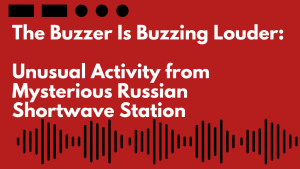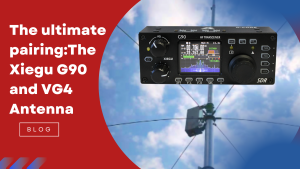
How Australians Continue to Make This Hobby Their Own
In a country as vast and varied as Australia, shortwave radio has long played a quiet but powerful role. It’s more than a hobby—it’s been a lifeline, a companion, and a source of connection for countless Australians, from remote stations in the outback to coastal towns and suburbs.
To celebrate that spirit, we’re sharing a short poem that reflects on what shortwave means in our wide, open landscape:
Shortwave in the Sunburnt Land
Across the bush and coastal shore,
Shortwave signals start to roar.
From foreign news to Aussie call,
It travels freely, reaching all.
We built our kits, we tuned each dial,
And found a voice from every mile.
With country vast and towns so wide,
Radio stayed right by our side.
No apps required, no cables neat—
Just radios humming to their beat.
And every net and every wave,
Connects the hearts of those who crave.
A Tradition That Endures
While technology continues to race forward, the reliability and simplicity of shortwave radio still hold strong appeal. It’s independent, it’s global, and it works where nothing else does. For many Australians, especially those living outside major cities, that matters.
Shortwave has also stayed relevant by evolving with the times. DSP receivers, digital demodulation, compact antennas and more have made it easier than ever to get started—and to keep improving.
Long Weekends on the Bands
The recent King’s Birthday long weekend was a perfect example. Across the country, enthusiasts set up antennas. Radio nets buzzed with activity. Whether chatting with mates or scanning for distant broadcasts, operators made the most of the extra time and quiet air.
There’s something especially rewarding about going portable, tuning in from under the gum trees, or checking in with your regular net from somewhere off-grid. The experience is both peaceful and powerful.
What Did You Get Up To?
Were you on the air over the long weekend? Did you try out a new antenna or tick off a DX station you’ve been chasing?
We’d love to hear your stories. Share a photo, leave a comment, or tag us online with your setup or logbook highlights.
Shortwave in Australia isn’t going anywhere—and with every new voice on the dial, it continues to grow.

Shortwave enthusiasts around the world may have noticed a recent increase in activity from Russian military commandment network commonly known as “The Buzzer”.
The Buzzer operates 24/7 on 4625Khz using USB mode and uses male and female announcers. The station has been operating in various forms and under a variety of callsigns since the 1970’s. Originally using the callsign UBV-76, the current callsign is NZhTI.
When no traffic is being sent, the station emits a frequency marker signal to ensure the frequency is not used by other stations. It is believed that the station services the Russian “Western Military District”.
Conspiracy theories abound regarding the purpose of these broadcasts. Maybe it’s a doomsday device monitoring for nuclear attacks, maybe it’s a spy network, possibly its an emergency channel to be used during conflict, or a Russian submarine communications system.
Monitoring enthusiasts received 24 abnormal transmissions on December 11 2024. A total of 30 words were broadcast in contrast to the normal buzzing sound.
Its easy to listen to “The Buzzer” these days. Just select an on online SDR in Sweden or another Scandinavian country and listen on 4625 Khz USB. You will hear and see the signal in real time.
For a list of KiwiSDR receivers around the world, visit: http://kiwisdr.com/public/

If you’re an amateur radio enthusiast looking to elevate your setup, there’s one combination that stands out: the Xiegu G90 HF SDR Transceiver and the Xiegu VG4 4-Band Ground Plane Antenna. Whether you’re chasing DX contacts or simply enjoying the art of radio communication, these two pieces of gear together offer an outstanding balance of performance, versatility, and sheer fun.
Why the Xiegu G90 is a Must-Have
The Xiegu G90 is an HF Software-Defined Radio (SDR) transceiver that has earned a stellar reputation among amateur radio operators. With 20 watts of output power, a built-in antenna tuner, and an adjustable 1.8-30 MHz frequency range, this compact rig punches well above its weight.
But don’t just take our word for it—one seasoned operator had this to say in a recent review:
“This review comes from experience. It started over nine years ago with the purchase of the Xiegu X1M 5-watt transceiver—well, it still goes well and it just spells fun! I’ve had quite a few contacts with this X1M Pro using portable antennas. Over time, I’ve built a collection of HF transceivers, and after extensive research, I decided to add the Xiegu G90 to my setup. What a bit of kit this thing is! It just blew me away with its lovely RX and TX audio.
Okay, it’s 20 watts—but so far, I’ve reached Japan, the USA, and ZL stations on 40m. It has put real fun back into DXing with a simple dipole! The performance is incredible. As an SWL (shortwave listener), it’s also just the ant’s pants in AM.”
It’s clear the G90 is a powerhouse, but to truly unlock its potential, you need the right antenna.
Enter the Xiegu VG4: The Ideal Match
The Xiegu VG4 4-Band Ground Plane Antenna is designed for 40m, 20m, 15m, and 10m amateur bands, making it an excellent match for the G90’s capabilities. Here’s why they’re a perfect pair:
Optimized Efficiency – The VG4’s parallel resonators ensure maximum vertical element efficiency, allowing for clear and strong transmissions.
Compact Yet Powerful – Despite its sub-8-metre length, this antenna packs a punch with 150 kHz bandwidth on 40m, 450 kHz on 20m, 800 kHz on 15m, and 1000 kHz on 10m.
Built to Last – With 304-grade stainless steel clamps, an anti-oxidation coating, and a design that withstands 35m/s winds, this antenna is as tough as they come.
Handles Serious Power – Rated at 1000 watts PEP (400W CW), it provides excellent power-handling capabilities for any serious operator.
A Classic Hobby, but better.
For many radio enthusiasts, amateur radio is more than just a pastime—it’s a tradition passed down through generations. If you remember watching your dad carefully tuning his rig and catching distant signals, you’ll appreciate how today’s technology has kept the magic alive while improving performance.
By pairing the Xiegu G90 with the VG4 antenna, you’re ensuring crystal-clear reception and transmission, letting you reach far beyond what you thought possible. Whether you’re reminiscing about your first DX contact or making new ones across the globe, this combination is guaranteed to deliver the best possible experience.
Ready to Upgrade Your Setup?
If you’re serious about amateur radio, don’t settle for second best. Pair your Xiegu G90 with the VG4 4-Band Ground Plane Antenna and experience the hobby like never before.
[Explore the Xiegu G90 & VG4 Today!] https://www.tecsunradios.com.au/store/product/xiegu-g90-transceiver/
https://www.tecsunradios.com.au/store/product/xiegu-vg4-hf-vertical-amateur-bands-antenna


